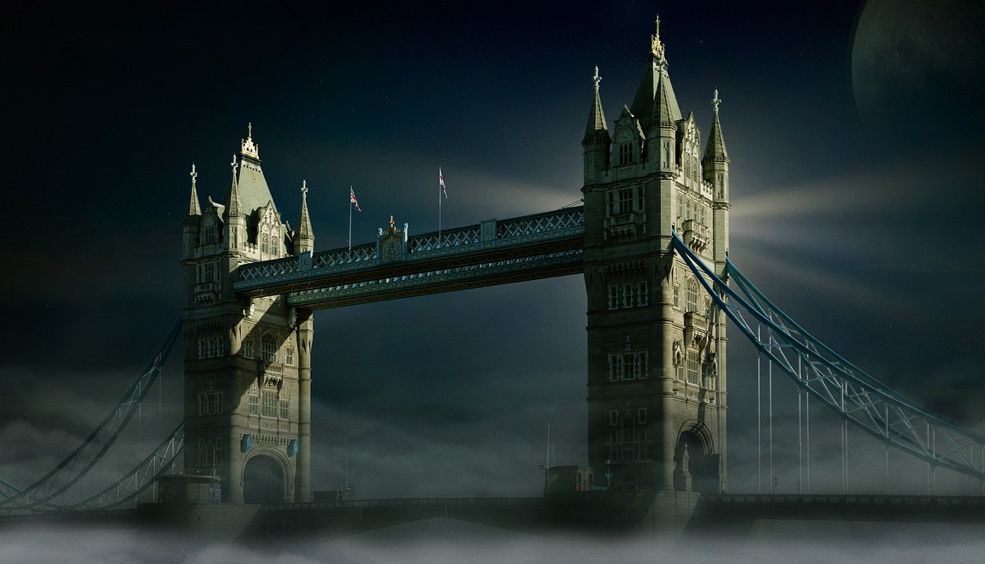Enjoy the spookiest Halloween ever. The best destinations in Europe!
Celebrate Halloween in one of the cities that we suggest in this post. If you love dark tourism and all things spooky, don’t miss these fang-tastic plans for 31 October (and the days around it!).
more infoFemale pilots who broke through more than glass ceilings
Thérèse Peltier, Raymonde de Laroche, Ruth Law, Amelia Earhart, Geraldine “Jerrie” Mock, Hélène Dutrieu… Quite a few female pilots have not only broken through those metaphorical "glass ceilings" but have reached the sky! And with 8 March, International Women's Day, just a few weeks away, we want to refresh your memory about some of the names that made aviation history.
more infoArt, Entertainment and Culture in Strasbourg’s Grande-Île
Strasbourg’s historic centre, known as the Grande-Île (great island), is an enchanting maze of lanes, picturesque squares and houses with wood carvings. Concentrated in a small area on this river island is an exceptional wealth of art heritage, an enriching blend of French and German essences.
A Cathedral With A 1,000 Years of History
An example of this is the Cathedral of Our Lady of Strasbourg, the pride of the city. While Strasbourg is located in France, the Cathedral is one of the finest exponents of the German Gothic and the clearest example of the artistic harmony between the two cultures. Situated on the Grande-Île, it is one of Europe’s most beautiful cathedrals. For 200 years it was the world’s tallest building, while currently it is the fourth tallest religious building on earth. Its interior houses an extraordinary, 18-metre-high astronomical clock, built in 1571. It is regarded as the world’s first computer as it is capable of calculating dates, and it marks all calendar holidays. The moment most awaited by tourists is when it peals out the midday chimes, and the figures of the Apostles parade in front of Christ.
The foundations of Strasbourg Cathedral were laid in 1015, and its construction was not completed until 400 years later. This year, 2015, the city’s most important religious building turns one thousand years. A programme of activities has been drawn up to commemorate this anniversary, notably the event “1015 - 2015 : La Cathédrale de toute éternité”, a spectacle of lights projected on the Cathedral’s main facade. This will take place every Thursday from 4 July to 20 September. The times for July are at 10.30 p.m., 11 p.m., 23,30 p.m. and 24 p.m. In August, at 22.15 p.m., 22.45 p.m., 23.15 p.m. and 23.45 p.m. and, in September, at 21.15 p.m., 21.45 p.m. and 22.15 p.m.
FARSe will Fill the Streets of Strasbourg with Scenic Arts
Another enticement for visiting the city in July is the Festival des Arts de la Rue (Street Arts Festival), providing free shows for all audiences in some of Strasbourg’s more central, emblematic areas distributed mainly along the axis between the Austerlitz and Kléber squares.
On Friday 17 and Sunday 19 July, these spots will feature circus, theatre, dance, music and burlesque shows to liven up your visit to the city centre even more. Leading theatre companies, selected under the supervision of and in collaboration with the dancer and choreographer, Ali Salmi, will provide the highlights of these performances.
Of all the shows scheduled for this year, the aerial dance and pyrotechnics of Deus Ex Machina take pride of place. They will be performing on 17 July at 10 p.m. in the Place Kléber, and at the Holi Festival – a festival of colours of Hindu origin – in conjunction with the company Artonik, at the close of the festival on 19 July. You can choose from among the various options shown on the full programme here.
The Place Kléber
One of the nerve centres of the shows is the place Kléber, the city’s main square and a major hub of commercial activity. This, the preferred meeting point of Strasbourgers, is also the centre of the Grande Île, fringed with magnificent Renaissance buildings and located near the Cathedral.
The Maison Kammerzell
North-east of the Cathedral square, on the Rue des Hallebardes, lies the Maison Kammerzell, another must-see, as it is one of the best preserved late-Gothic buildings in the area. It is considered by some to be the most beautiful building in Strasbourg, on account of its decoration of carved figures and stunning leaded windows. Like the Grand Île, it is listed as UNESCO World Heritage.
La Petite France
Also on the Grand Île is La Petite France, the most picturesque district in the historic centre. Its timber-framed houses date from the 16th and 17th century, when they were inhabited by fishermen and millers.
Don’t wait to hear about it from someone else – come and live it out for yourself. Check out our flights here.
Text by Scanner FM
Images by Chris Barker, Spiterman, María Renée Batlle Castillo, Filip Maljković , Richard Penn, Daniel Sancho
more infoParis, With Kids
1) Parc de La Villette
Open all year around, La Villette is a surefire destination for entertaining boys and girls aged 0 to 99 years! It is the largest park in France, stretching across an area of 55 hectares, and workshops, activities and shows are organised in its gardens and outhouses, come sunshine, rain or snow. It is renowned for its Cinéma en plein air (open-air cinema) in summer. Thousands of Parisians congregate there hours before the sessions to jostle for a good seat and unpack their picnic hampers. In winter, many workshops and other activities are held in the Grande Halle, an emblematic iron-and-glass building that was once France’s most important livestock market. But, to get back to what concerns us here – children – one essential destination is the Jardin des Vents et des Dunes, an admission-free playground recommended for children aged 0 to 13 years. Adults can stretch out on the chaises longues while they keep an eye on their youngsters. The Jardin des Voltiges, given over to circus, is an admission-free venue where kids can experience gravity on ropes, climb or ride a monocycle. Some interesting educational workshops and exhibitions are also organised in La Villette.
2) Cité des Sciences, Cité des Enfants and la Géode
La Villette is not exactly in the centre of Paris so, if you want to visit it, the best thing is to spend the whole day there and also see the Cité des Sciences, the Cité des Enfants and la Géode. The Cité des Sciences features some interesting educational exhibitions for the young – and not so young! – but for children the jewel in the crown is the Cité des Enfants. This huge space, taking up 5,000 square metres, hosts all kinds of activities, experiments, water games and discovery areas for learning while you play. It is divided into two parts – one for children for 2 to 7 years, and another for ages 5 to 12. To round off the day, a fitting choice would be to watch a movie or documentary on the 360° screen in the fantastic Géode.
3) Galerie de l’Évolution
The Gallery was inaugurated in 1889, shortly after the Eiffel Tower, as the Galerie de Zoologie. The formidable sight of a huge herd of elephants, giraffes, zebras or buffaloes will win over the young ones from the outset. The museum’s permanent exhibitions focus mainly on the evolution of the species, while the subjects of extinct and endangered species are also stressed. Children can discover biodiversity and environmental hazards through playful interactivity in the Galerie des Enfants. Further information here.
After such a flood of taxidermy animals, your children are likely to fancy seeing some live specimens. You need only to go outside the museum to come across the Zoo del Jardin des Plantes, a centre dedicated to the study and conservation of some 200 plant species, while for animal sightings you shouldn’t miss the Parc Zoologique de Paris, where you can have breakfast alongside the giraffes, or cut your teeth as animal handlers by feeding a manatee, a kind of giant seal weighing in at 600 kilograms.
4) Orchestre de Paris
One of France’s most prestigious orchestras offers concerts for the whole family where language is unimportant. Children and adults alike will discover music through a series of concert shows purpose designed for a public of all ages which elicit participation. You can check out their programme and times on this website.
5) Museum-wise
Most museums in Paris have materials specifically for children, including whole rooms and halls customised to their needs. The Louvre, for instance, organises workshops, family visits and story-telling sessions geared to discovering the museum as a form of entertainment. Parents can also download teaching material from their website or request it at information points. Noteworthy among the museums most highly rated by Parisians for their family facilities are the Palais de Tokyo and the Pompidou Centre, where they also organise workshops, activities and exhibitions tailored to children and adolescents.
In addition to the well-known museums, Paris has a host of others catering to all tastes. Don’t rule out visting some that will cause surprises, such as the Musée de la Poupée, Musée Gourmand du Chocolat, Musée de la Musique and the Musée Aéronautique.
So, head for Paris with your children – check out our flights here.
Text by Rita Peré / ISABELYLUIS Comunicación
Images by Cité des enfants, Francois_Grandin, Galerie de l’Évolution, Little Palais, Paris Tourist Office. Daniel Thierry, Paris Tourist Office. Amélie Dupont, Arnaud-Legrain
more info




